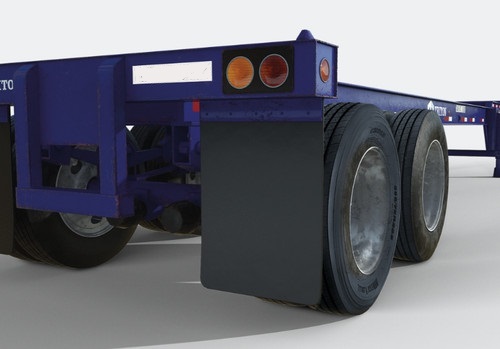In an increasingly interconnected world, the transport industry plays a crucial role in facilitating trade and commerce. One of the essential components that ensure safe and efficient transportation is the chassis of vehicles, particularly in the realm of intermodal freight. But what exactly are roadworthy chassis? Why are they vital for logistics and transportation companies? This comprehensive guide will unravel the details surrounding roadworthy chassis, their importance, maintenance, regulations, and more.
1. Introduction to Roadworthy Chassis
Definition
A roadworthy chassis is essentially the framework of a vehicle that is deemed safe and suitable for operation on public roads. It includes the vehicle’s frame, suspension, axles, and wheels, which all work together to provide support and stability. A roadworthy chassis must comply with specific safety regulations to ensure not only the safety of the vehicle itself but also the safety of the driver, passengers, and other road users.
Components of a Chassis
The chassis is comprised of several critical components, each with its unique function:
- Frame: The primary structure that supports the entire vehicle.
- Suspension System: Ensures a smooth ride by absorbing shocks from road irregularities.
- Axles: Connect the wheels to the vehicle, allowing them to rotate.
- Steering System: Facilitates the direction of the vehicle.
- Braking System: Necessary for stopping the vehicle safely and effectively.
2. The Importance of Roadworthy Chassis
Safety and Compliance
Safety is paramount in the transport industry. A roadworthy chassis is the first line of defense against accidents caused by mechanical failures. Regulatory boards mandate regular inspections to ensure compliance with safety standards. Vehicles operating with roadworthy chassis mitigate risks and contribute to lower accident rates on the roads.
Impact on Logistics Efficiency
Transport efficiency largely depends on the condition of the vehicle. A roadworthy chassis contributes to better fuel efficiency, decreased downtime, and reduced repair costs. In logistics, where time is of the essence, vehicles with well-maintained chassis facilitate timely deliveries, helping businesses save money and maintain customer satisfaction.
3. Types of Chassis
Standard Chassis
These are the most common types of chassis used in freight transport. They typically feature a simple design aimed at is narrowing production costs while meeting safety regulations.
Dual-Tire Chassis
Dual-tire chassis are designed to bear heavier loads and provide improved stability. The dual-tire system means that each wheel axle has two tires, spreading the weight and reducing strain on the chassis.
Maximized Load Chassis
These chassis are specifically designed to optimize load capacity without compromising safety or compliance. They incorporate advanced materials and engineering techniques to support increased weights that today’s logistics demand.
4. The Process of Ensuring a Chassis is Roadworthy
Ensuring a chassis is roadworthy involves continuous assessment throughout the vehicle’s lifecycle.
Initial Inspection
Before any vehicle is put into service, it undergoes an initial inspection, which includes checking all the chassis components for defects or inadequacies.
Regular Maintenance
Chassis require routine maintenance to avoid wear and tear. This includes checking for rust, inspecting the suspension and braking systems, and ensuring tires are in good condition.
Repairs and Replacement
When defects are found, timely repairs or component replacements are necessary to maintain roadworthiness. Delaying repairs can lead to more severe issues, including accidents.
5. Regulations Governing Roadworthy Chassis
National Regulations
Various national agencies lay down guidelines for what constitutes a roadworthy chassis, and these regulations can vary from country to country.
State-Specific Regulations
States may impose additional regulations based on local conditions, such as road types and climate. Logistics companies should remain vigilant about these laws to ensure compliance.
6. Common Problems and Their Solutions
Signs of Wear and Tear
Common signs that a chassis may not be roadworthy include strange noises, vibrations, or poor handling. Regular inspections can help identify these early signs.
Preventative Measures
Investing in high-quality materials and technology can prevent many issues. Keeping up with regular maintenance schedules is crucial in ensuring a chassis remains roadworthy.
7. The Future of Chassis in Transportation
Technological Innovations
Emerging technologies such as advanced materials and AI-assisted inspection tools are paving the way for more reliable and efficient chassis designs in the future.
Environmental Considerations
With a growing focus on sustainability, manufacturers are increasingly looking for ways to reduce the environmental impact of chassis production and maintenance.
8. Conclusion
Roadworthy chassis are the backbone of the transport industry, affecting not only the safety and efficiency of logistics operations but also shaping the future of transportation. As technology advances and regulations evolve, staying informed about the state of chassis and their roadworthiness will remain crucial for companies in the logistics sector. Understanding the various aspects of roadworthy chassis enables businesses to enhance operational efficiency while ensuring compliance and safety on the roads.
By prioritizing the importance of roadworthy chassis, companies can optimize their fleet management, promote safety in transport operations, and contribute to a more sustainable future for the industry.


